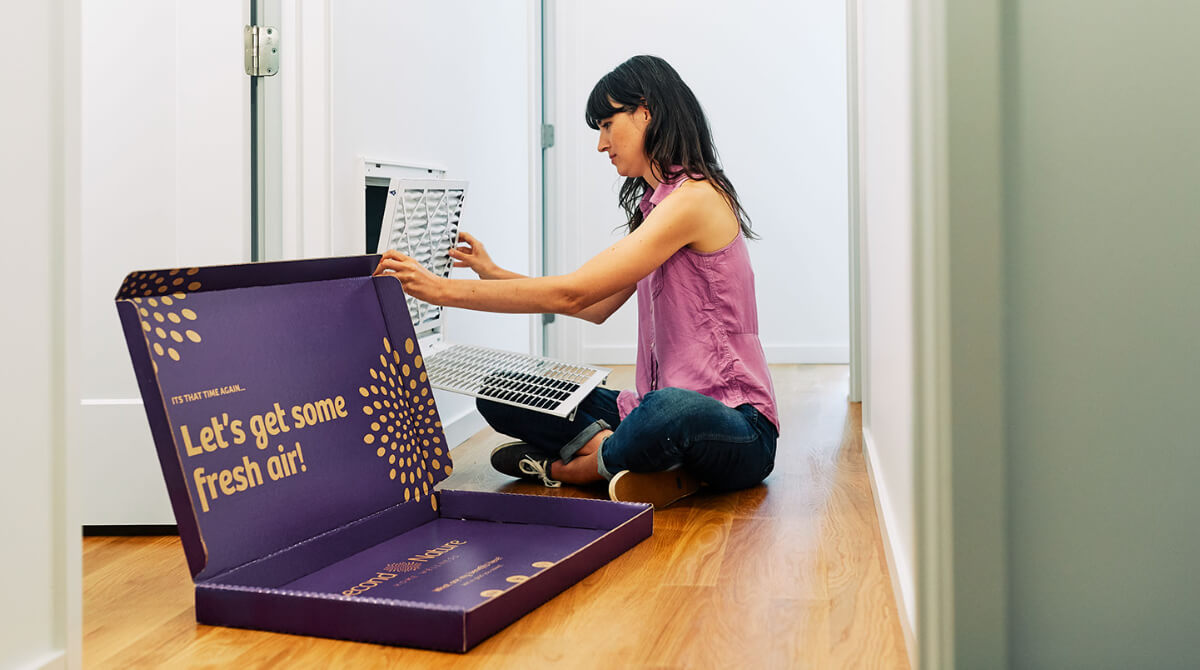Where in my house are the filters?
While it’s crucial to change out your air filters regularly, you won’t get far if you do not know where they are supposed to go! Whether you recently moved into a new home or your better half (you know, the responsible one) isn't around, here are some tips and clues you can use to make your search easier.
Changing the filters in the HVAC unit
In this case, your air filter is most likely located right next to your furnace or air conditioning system air handler. The air handler is the large metal box containing the fan and fan motor. Typically, the unit would be found in a basement, an attic, or sometimes in the back of a closet. Once it is located, look for a slot where an air filter should fit. What you are seeking is a 1" wide hinged or removable cover. If you have a thicker filter that is 4" or more, the slot should match accordingly. There should already be a filter placed in there, which will confirm that you found the right spot! It will depend on your unit, but it can be orientated vertically or horizontally. Just make sure that your airflow arrow points towards the unit!
If you looked everywhere and you still cannot find any possible place to put in a filter, there is no need to panic! It just means that you need to use a return vent. That, or you might have to update your eye prescription.
Changing the filters in a return vent

The air handler pulls air in from the house through the return duct system, and then blows the air through the heating or cooling system and back into the house through the duct system. The air filter is typically located at the point where the return duct enters the air handler.
Larger houses often have more than one HVAC system. Each system will typically have at least one air filter. Therefore, your home may have filters located at the air handler AND in the returns. You should check each possible location to make sure you have found all of your filters.
Since HVAC units are usually hidden away in smaller and less convenient spaces, some homes are set up for air filters in return vents. Return vents are often in the wall but can be in your ceiling or even the floor. The vent will be rectangular or square and should be larger than a standard air duct vent. If you already know the filter sizes that your home needs, that is a good hint for the shape of the return vent that you need to find.
Once found, the cover of the return vent can be removed by pulling a tab or unscrewing a bolt. For the latter, an ordinary coin should do the trick to loosen it, similar to a standard screwdriver. Place the cover to the side and remove the old filter. Place the new filter in the same way as the old one. Pleated filters have one side that has thin metal wiring and another side without. When installed in the return vent, the side with metal should be facing away from you and should not be seen. The purpose of the wiring is to keep the filter's shape. Since the vent is pulling air inwards, it is more efficient for particles to collide with the plain side of the fibers. Finally, put the cover back, throw away the old filter, and then find the next return vent.
Case closed
You should now be able to find all the spots where your filters need to be installed! If you are still uncertain and would like more assistance, a local HVAC technician would be able to find all the locations that need to be maintained easily.
Just be sure to regularly check on your filters and change them out frequently to have clean air and a happy HVAC system! Or you could save some time by signing up for some pretty handy air filter subscription service. Just a thought.
Topics:




